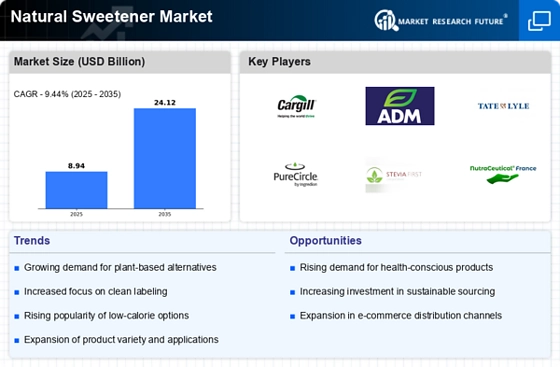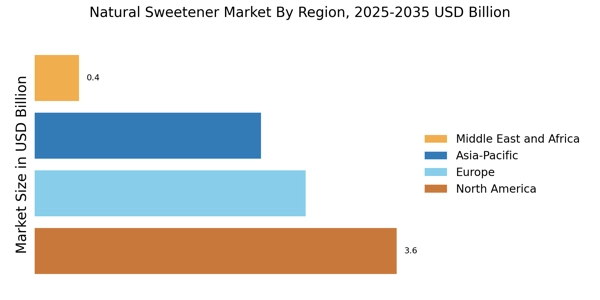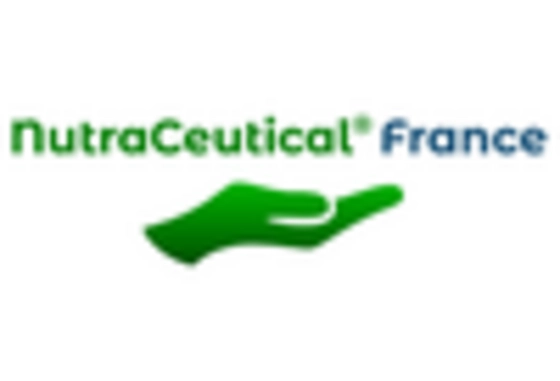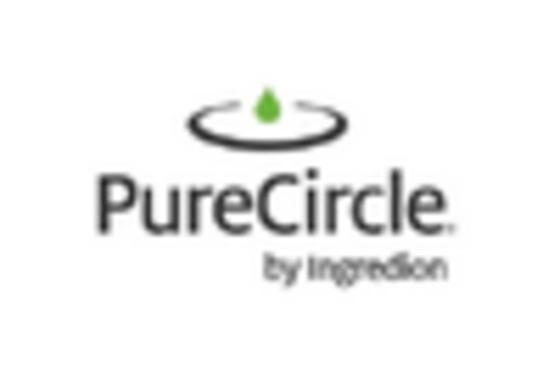Innovations in Sweetener Technology
The Natural Sweetener Market is experiencing a wave of innovations in sweetener technology, which is enhancing product offerings and consumer appeal. Advances in extraction and processing techniques are enabling manufacturers to produce high-quality natural sweeteners with improved taste profiles and functional properties. For example, new methods of extracting sweetness from plants are yielding products that are not only sweeter but also retain more of the natural flavor. This technological progress is likely to attract a broader consumer base, including those who may have previously been skeptical about natural sweeteners. As these innovations continue to emerge, the Natural Sweetener Market is expected to evolve, offering a diverse range of products that meet varying consumer needs.
Growing Awareness of Health Benefits
The Natural Sweetener Market is benefiting from a growing awareness of the health benefits associated with natural sweeteners. Consumers are increasingly informed about the potential health risks linked to excessive sugar consumption, leading to a shift towards alternatives that offer lower glycemic indices and fewer calories. Research indicates that natural sweeteners can provide sweetness without the negative health impacts of refined sugars, making them an attractive option for health-conscious individuals. This heightened awareness is driving demand within the Natural Sweetener Market, as consumers actively seek out products that align with their health goals. Consequently, manufacturers are responding by expanding their portfolios to include a wider variety of natural sweeteners, further fueling market growth.
Rising Popularity of Plant-Based Diets
The Natural Sweetener Market is witnessing a rise in popularity of plant-based diets, which is significantly influencing consumer preferences. As more individuals adopt vegetarian and vegan lifestyles, the demand for plant-derived sweeteners is increasing. This trend is reflected in the growing sales of products such as stevia and monk fruit, which are derived from natural sources. Market analysis indicates that the plant-based sweetener segment is expected to grow substantially, driven by the health benefits associated with these alternatives. The Natural Sweetener Market is thus positioned to capitalize on this trend, as consumers seek out sweeteners that align with their dietary choices and ethical considerations.
Increasing Demand for Natural Ingredients
The Natural Sweetener Market is experiencing a notable surge in demand for natural ingredients as consumers become more health-conscious. This trend is driven by a growing awareness of the adverse effects of artificial sweeteners and a preference for products perceived as healthier. According to recent data, the market for natural sweeteners is projected to grow at a compound annual growth rate of approximately 8% over the next five years. This shift towards natural ingredients is not only influencing consumer choices but also prompting manufacturers to reformulate existing products to align with these preferences. As a result, the Natural Sweetener Market is likely to see an influx of innovative products that cater to this demand, further solidifying the position of natural sweeteners in the food and beverage sector.
Regulatory Support for Healthier Alternatives
The Natural Sweetener Market benefits from increasing regulatory support aimed at promoting healthier food options. Governments and health organizations are advocating for reduced sugar consumption, which has led to the implementation of policies that encourage the use of natural sweeteners as alternatives. For instance, some regions have introduced guidelines that favor the inclusion of natural sweeteners in food products, thereby creating a more favorable environment for their adoption. This regulatory landscape not only supports the growth of the Natural Sweetener Market but also enhances consumer confidence in choosing products that are perceived as healthier. As regulations continue to evolve, the market is expected to expand, providing opportunities for both established and emerging players in the natural sweetener segment.


















Leave a Comment